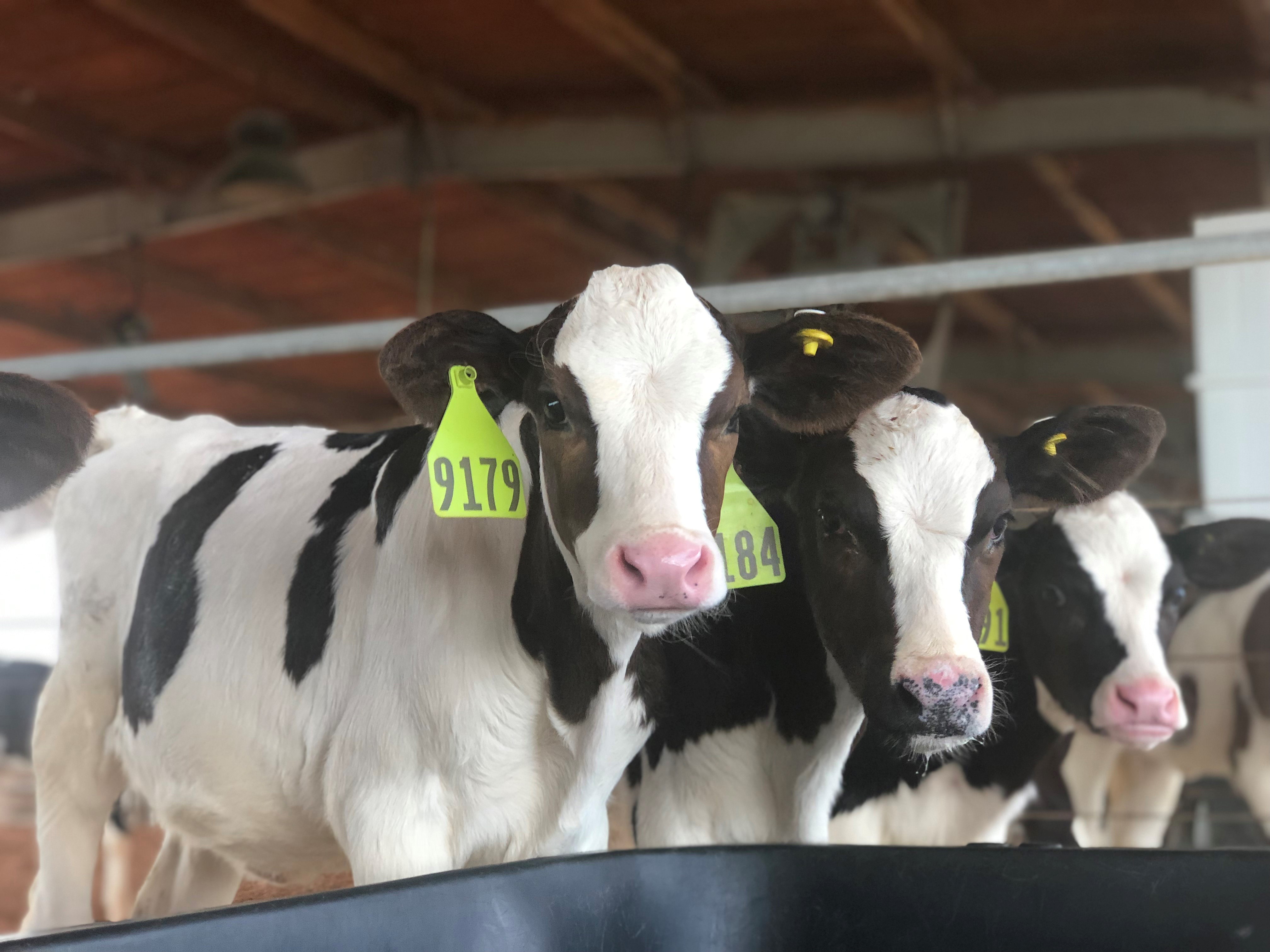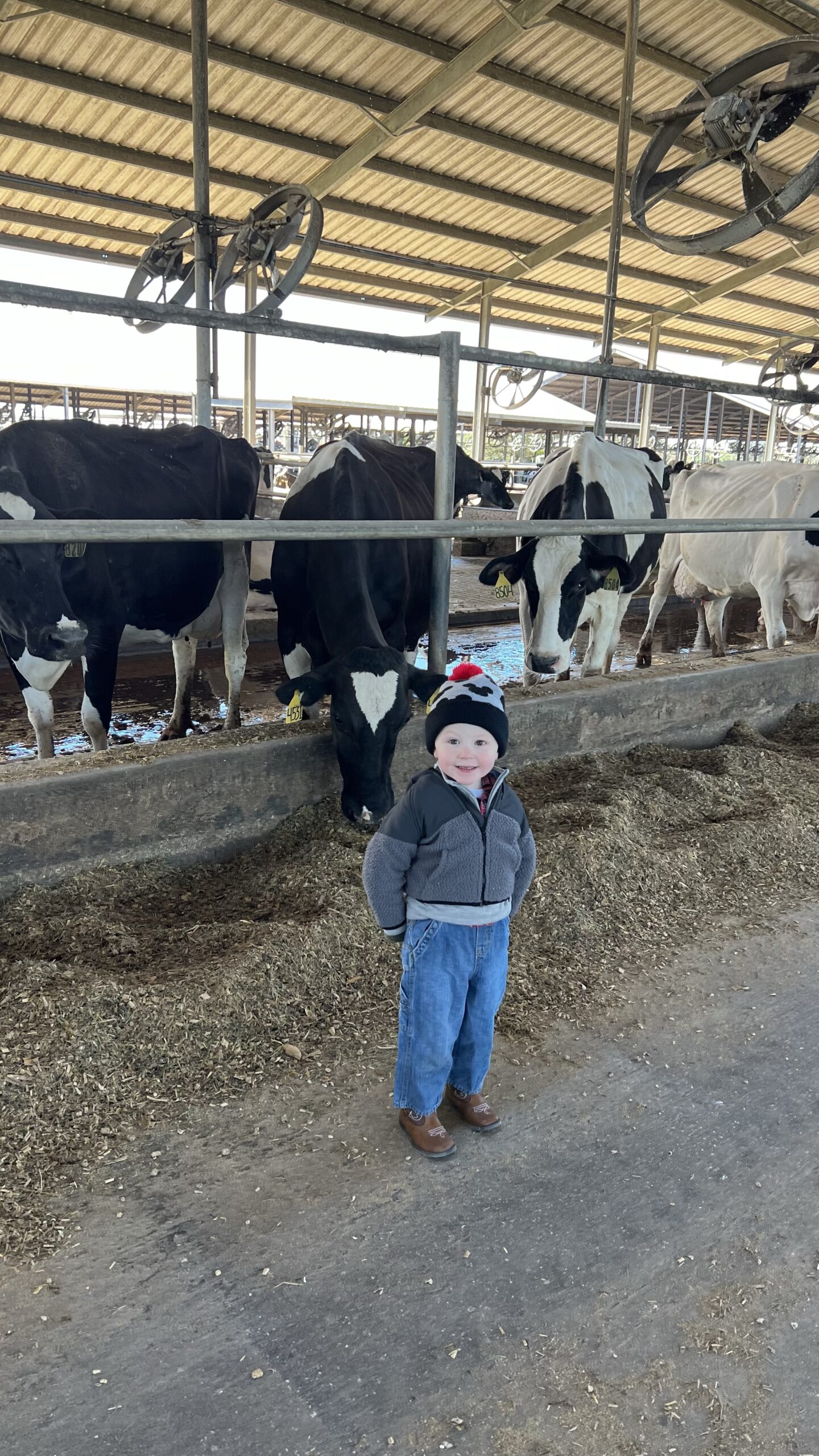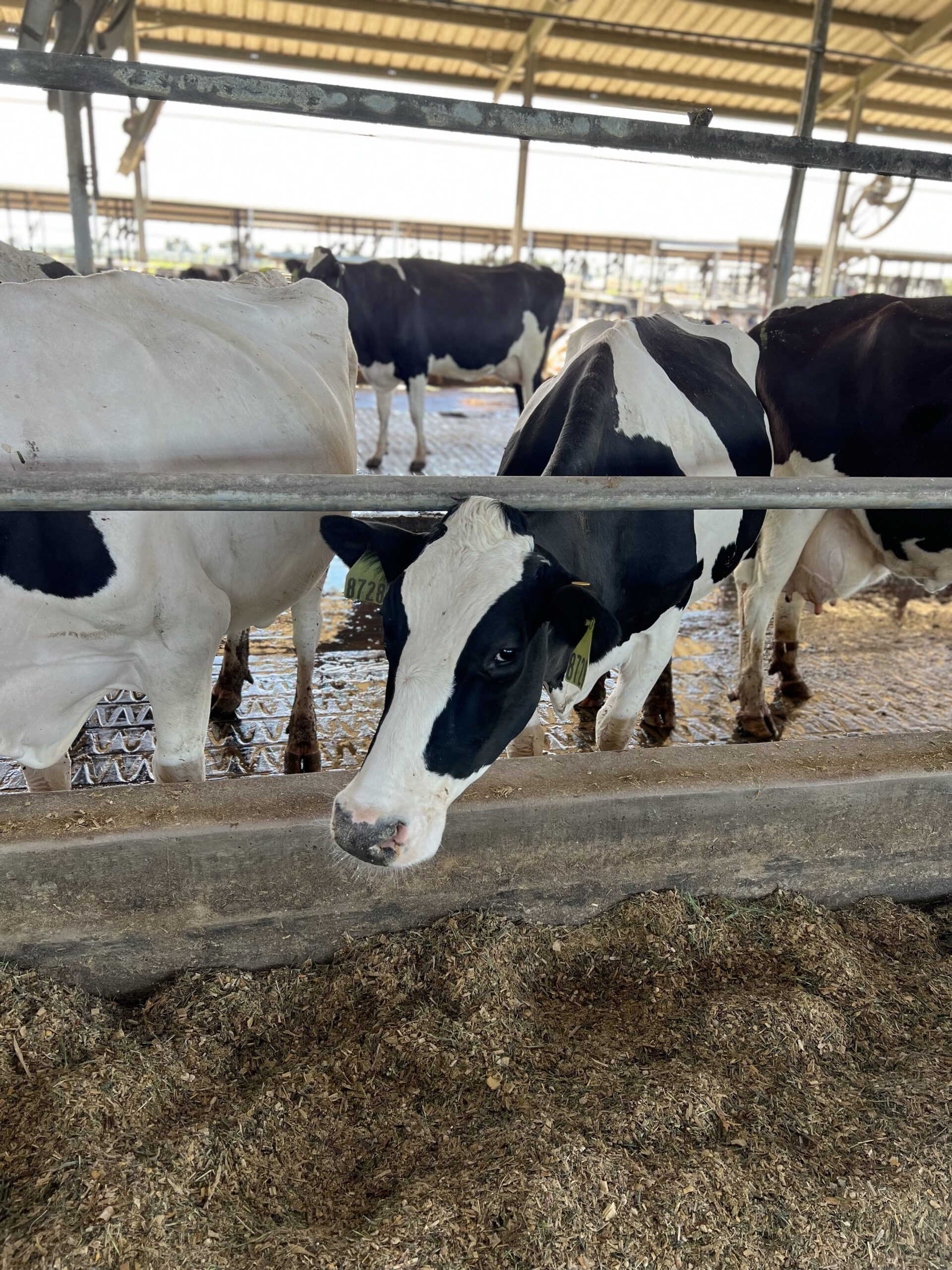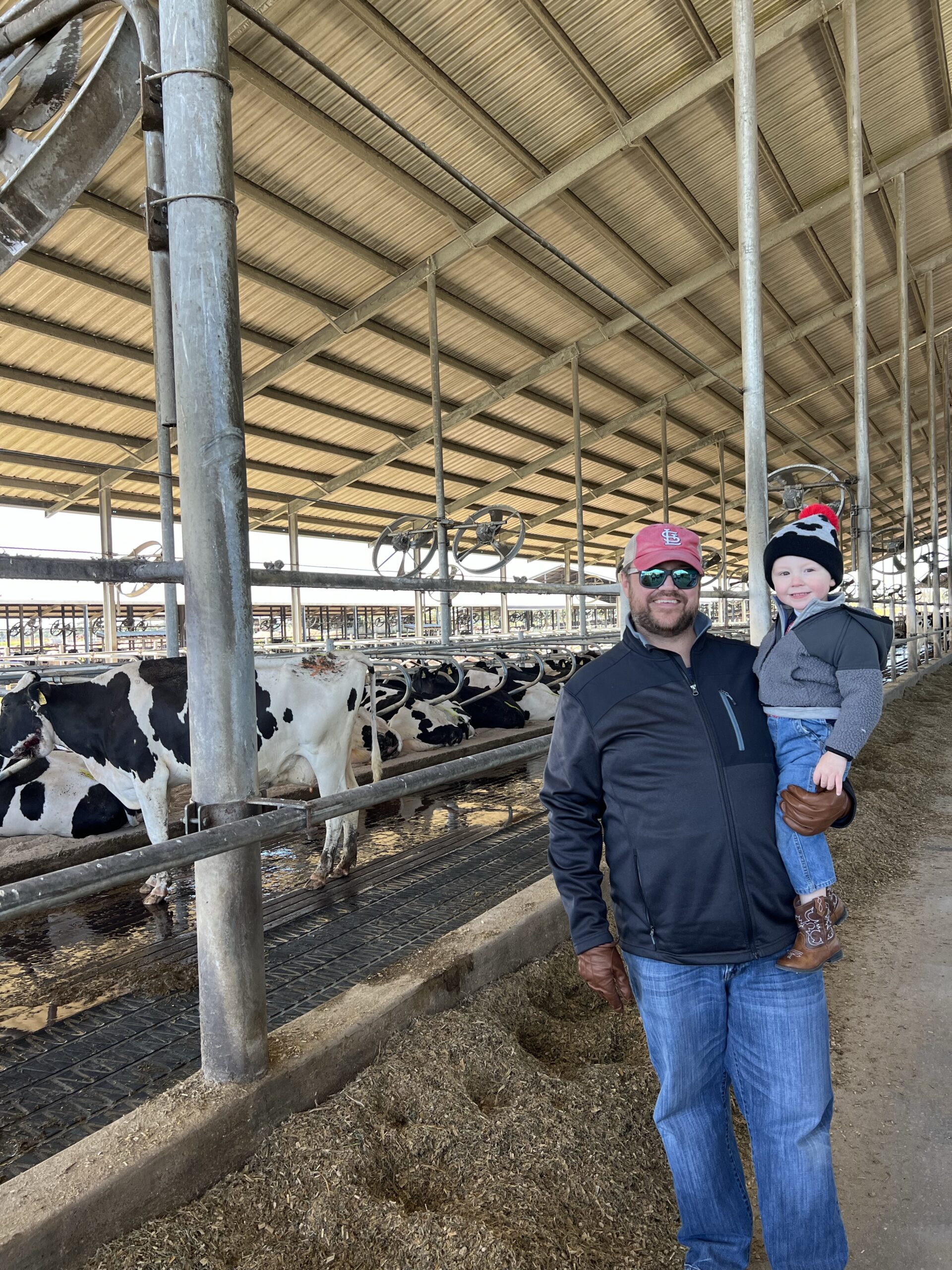
As an essential part of U.S. agriculture, dairy farms play a vital role in milk production
and providing various dairy products. We love partnering with Florida Dairy and all things dairy, like these yummy air fryer egg bites, boba tea recipes, healthy egg muffins, and ombra vanilla iced coffee. And we're grateful to have been invited for a farm tour at Milking R. If you live in South Florida, I highly recommend you spend some time at their farm. It is a fun place to play, and their Sutton ice cream and milk are the BEST ever.
In this blog post, I share some exciting dairy cow facts, shedding light on different breeds, milk production, and the daily lives of these incredible animals. From the Holstein breed to milking techniques, this post will provide an informative overview of dairy farms, offering insights into the captivating world of dairy cows.
Thank you to Florida Milk for sponsoring this post.
Dairy Farms in the United States

Dairy farming is a crucial sector within the agricultural landscape of the United States. From Florida farms to the rolling farmlands of New York to the vast expanses of the Midwest, dairy farms are scattered throughout the country, contributing significantly to the production of dairy products. With the demand for milk and other dairy products steadily rising, farmers nationwide work tirelessly to meet consumer needs.
Significant Dairy Cow Breeds

Milk Production and Nutritious Milk
Only female cows are responsible for milk production. A Florida dairy cow usually
produces around 6-8 gallons of milk daily, depending on breed,
nutrition, and lactation stage. Their highly nutritious milk provides essential vitamins,
minerals, and proteins, making it a valuable part of healthy diets for humans.
Social Animals and Ruminant Digestive Systems Dairy cows are social animals that thrive in group environments.
They have a strong herd instinct and enjoy companionship. Additionally, ruminant animals possess a unique digestive system comprised of four compartments (vs. humans having 1 compartment). This complex system allows them to efficiently digest fibrous plant material, such as grass and corn silage, converting it into milk and energy.
Care and Welfare of Dairy Cows

Ensuring the well-being of dairy cows is a top priority for dairy farmers. Good medical
care, proper nutrition, and comfortable living conditions are crucial for their health. A
comfortable environment for dairy cows is essential for their well-being and milk
production. Depending on their management style and geographic location, dairy farms utilize different types of barns to house cows, such as free-stall barns, which are prevalent in Florida. Good ventilation, barns fans, water misters, and bedding materials are incorporated to ensure cows' comfort, particularly in warmer climates or during hot seasons.
We were so impressed with everything the farmers at Milking R do to care for their
cows. They treat their cows like family!
This Farm Cares
Dairy farms like Milking R Dairy are part of a National Dairy FARM Program certified.
The FARM program proactively addresses the concerns of consumers, retailers, and
processors interested in how their food is produced. This on-farm audit assesses animal care and wellness, environmental stewardship, employee training, milk safety, and quality. 98% of the nation's milk supply comes from farms participating in the National Dairy FARM program to demonstrate and verify best animal care practices and quality assurance.
Milking Techniques and Technology
The milking process is a vital part of dairy farming, and technology has revolutionized
this aspect of the industry. Milking machines, invented by a Dutch sailing master in the 17th century, have significantly increased efficiency, reduced manual labor, and continued to evolve. Ear tags and milking devices allow farmers to monitor individual cows' milk production and ensure optimal care.
The Remarkable Cow's Udder
The cow's udder is a crucial component in milk production. It serves as the reservoir for milk and undergoes significant changes during the lactation period. An average dairy cow's udder can hold several gallons of milk. Farmers carefully monitor udder health and cleanliness to ensure the production of high-quality milk.
Milk Consumption and Dairy Products
Cow's milk is an essential part of many people's diets worldwide. It is valuable calcium, protein, and another essential nutrient source. The United States is one of the largest consumers of cow's milk and dairy products globally. From milk cartons to yogurt, cheese, and ice cream, dairy products provide consumers with a wide range of delicious and nutritious options.
Nutritional Requirements and Feeding
To produce milk efficiently, dairy cows require well-balanced and nutritious diets. Their feed often consists of grass, corn silage, alfalfa, and other forage crops. Supplemental feed, such as citrus pulp, almond hulls, and corn-based concentrates, may be added to meet their nutritional needs. Dairy farmers work closely with nutritionists to ensure cows receive the proper diet for optimal milk production and overall health.
Milking R farmers feed their heifers a grass-based diet balanced with the perfect
amount of proteins and minerals. They work closely with a veterinarian who visits the
dairy weekly to monitor the cows’ health. A cow nutritionist also helps craft the weekly menu to ensure the cows’ most balanced and healthy diet.
Reproduction and Calving
Reproduction is a crucial aspect of dairy farming. Female cows are bred through
artificial insemination for their safety and to ensure controlled and desirable genetics.
The gestation period for a cow is approximately nine months, after which she gives birth to a calf. The successful reproduction of dairy cows ensures a continuous supply of fresh milk for the farm.
Environmental Sustainability
Farmers recognize the importance of environmental sustainability. Practices such as zero grazing, which involves bringing forage to the cows instead of allowing them to
graze freely, help reduce the impact of dairy farming on natural resources. Manure
management techniques, including recycling and utilizing manure as fertilizer, also
contribute to the industry's commitment to sustainable practices.
Dairy Industry and Global Impact
The U.S. dairy industry is one of the largest in the world, alongside the European Union and New Zealand. It plays a vital role in the economy, providing employment
opportunities and contributing to local and national economies. Moreover, the export of dairy products supports international trade and fosters global relationships.
Dairy cows are incredible animals contributing to the U.S. food supply by providing
nutritious milk and dairy products, and dairy farmers work diligently to meet the demands of consumers. By understanding the various aspects of dairy farming, from different breeds and milk production to animal welfare and environmental sustainability, we can appreciate the hard work and dedication involved in bringing dairy products to our tables.
From their social nature and unique digestive systems to the various breeds and milking techniques, the world of dairy cows is fascinating and complex. By understanding these
dairy cow facts, we can gain a deeper appreciation for the hard work and dedication of dairy farmers who ensure a steady milk supply to meet consumer demand.
Remember, behind every glass of milk and every scoop of ice cream lies the dedication and care of dairy farmers and their cows, making dairy farming an integral part of agriculture and our daily lives.
Sources:
● Dairy Herd Management. (2022). Retrieved
● U.S. Department of Agriculture - National Agricultural Statistics Service. (2021).
Dairy 2019: Dairy Cattle Management Practices in the United


Leave a Reply